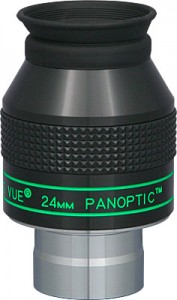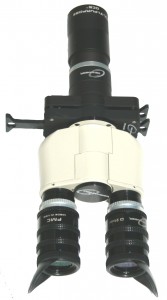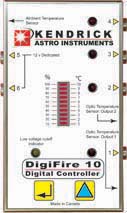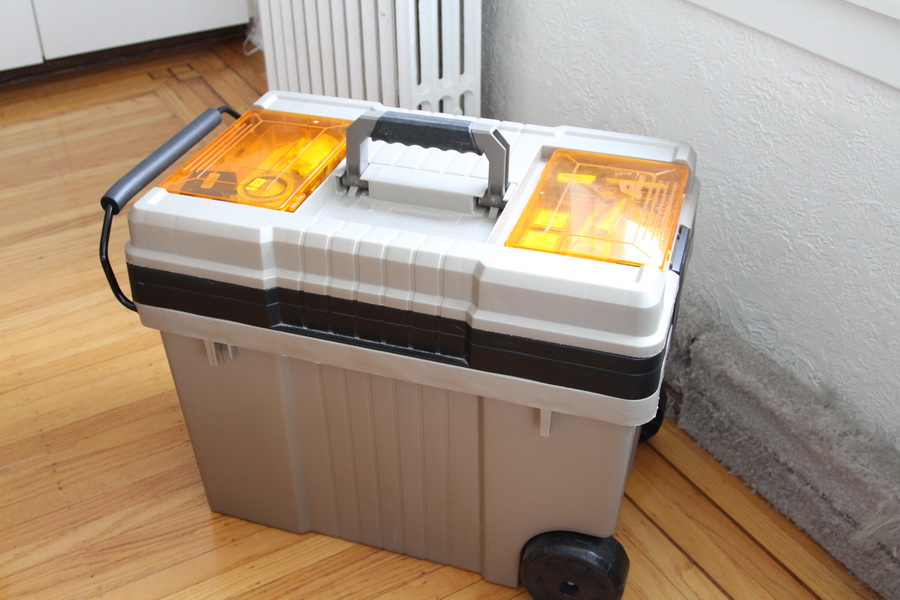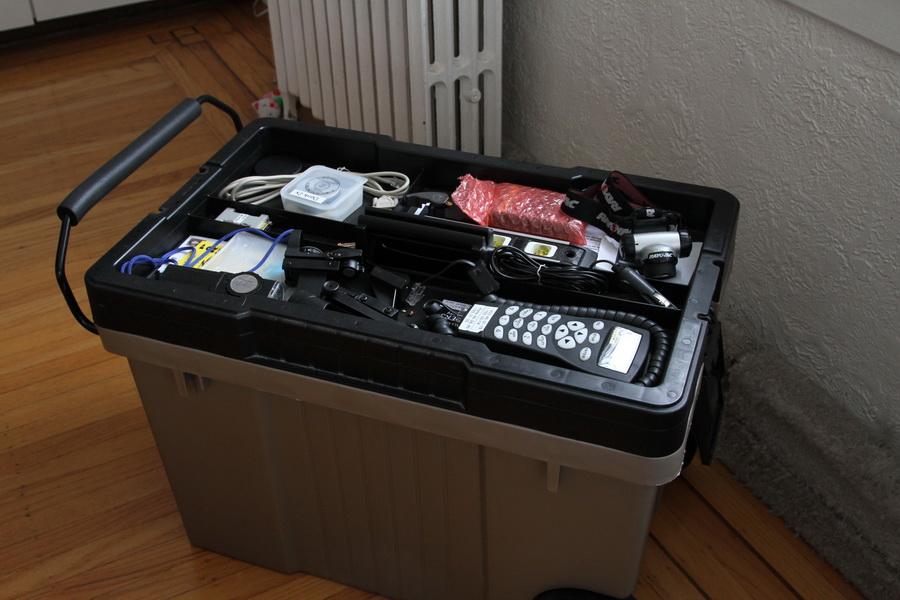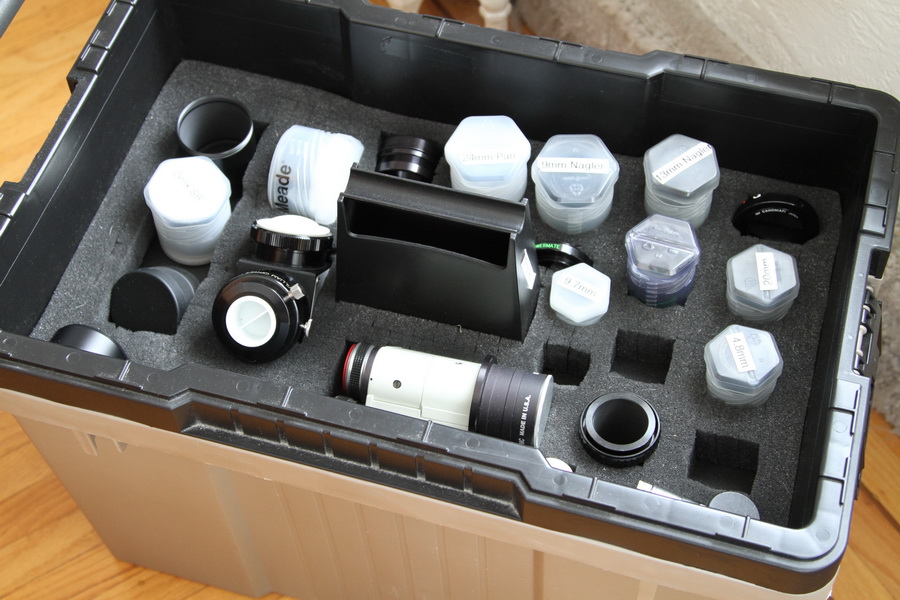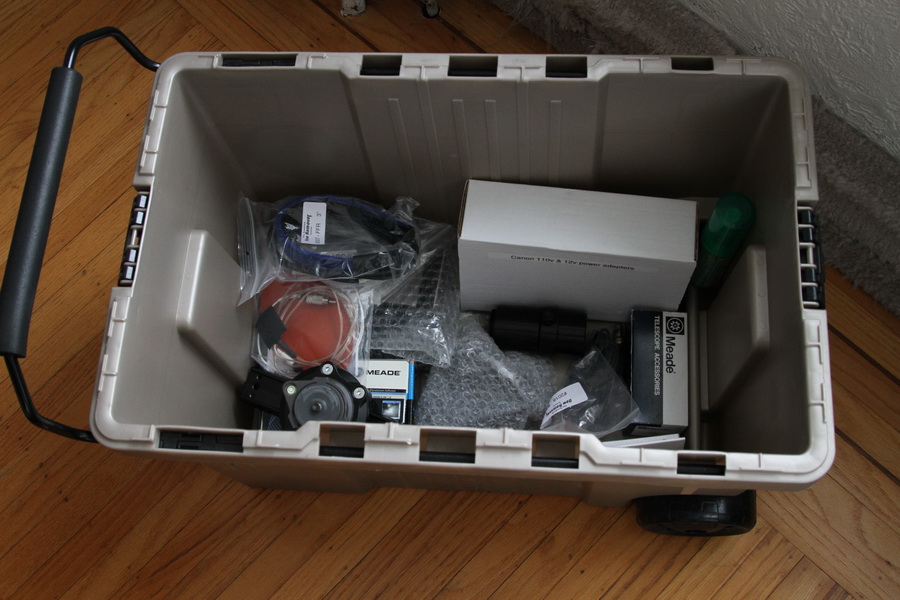Accessories for astronomical observing are endless…a good thing for a gadget freak such as myself! All this neat stuff to drool over, and sometimes I even buy.
Eyepieces
- Nagler 9mm & 13mm (Type 6) – these are my everyday eyepieces that are used more than any others (except the Panoptic 24mm). These eyepieces are expensive, however they represent some of the best in optics, are very comfortable to use, and are designed to work well with a wide array of telescopes. Tele Vue
- Panoptic 15mm & 24mm – used by themselves and in my binoviewer (see below). These eyepieces cost less than Naglers, and yet still deliver that space walk effect so often talked about with premium wide angle eyepieces. The 24mm Panoptic is probably my favourite eyepiece, bar none. These eyepieces are very comfortable to use, and are designed to work well with a wide array of telescopes.Tele Vue
- Tele Vue 20mm Plossl – These Plossl eyepieces can work well for general observing, where your budget is more restricted, but you want some high quality optics and can live with a narrower field of view than the Naglers and Panoptics deliver.
- Meade Series 4000 Plossls – 6.4mm& 26mm – I don’t use these eyepieces much anymore, however the 26mm is a sweet low power eyepiece for general use. The 6.4mm eyepiece is good to have when I need to collimate a telescope, but the high power is just too much for most conditions I normally observe in.
- Antares 9.7mm Plossl illuminated reticle – I use this eyepiece to achieve a precision alignment with my goto mount. The reticle can also be used to keep a star aligned during a manually-guided piggybacked camera astrophoto session, but I never do this anymore.
- Tele Vue 2.5x Powermate 1.25″ – equipped with a T-adapter; suitable for visual and a-focal photography. It can also serve as a superb substitute for a Barlow magnifier for visual use with eyepieces. Using a Powermate to observe planets is particularly rewarding.
Filters
- Lumicon Deep Sky – a light pollution filter which darkens the sky behind most emission nebulae
- Lumicon OIII – a more aggressive light pollution filter which darkens the sky behind emission nebulae, and greatly benefits visual observation of a half dozen celestial objects.
- Antares NPC-1 – a specialized filter used mainly on achromatic refractors, which reduces the violet fringe apparent on brighter objects. I find this filter to also be very useful for observing Mars, since it seemed to cut down the glare just enough to enhance the planetary detail, without altering the colour of the planet like coloured filters do.
- Antares Light Red – the traditional filter used for enhancing contrast and planetary detail, especially for Mars. The filter certainly performs as advertised, but I dislike the deep red colour cast.
- IDAS LPR – I use this light pollution filter when taking astro-photographs, especially when I’m at my light polluted home base. Refer to the Hutech website for graphs and discussion on how this filter is so effective in reducing the effects of light pollution when taking astro-photographs.
Binoviewers
At first glance, using binocular viewers on a telescope which only has a single optical tube may seem pointless. Nothing could be further from the truth! Using a binoviewer with a set of two eyepieces yields incredible views of celestial objects, especially planets, the moon, and star clusters. The Denkmeir Standard Binoviewers attach to my Tele Vue TV-76 apochromatic refractor or my Borg 101ED with the SR adapter mounted inside an Everbrite 2″ diagonal.
The following parts of the Denkmeir kit increase the flexibility of the binoviewers:
- StarSweeper™ 0.5x Focal Reducer fits on the 2″ nosepiece of the binoviewers and when used in combination with the Panoptic 24mm eyepieces yields expansive 1° views of the night sky.
- 2x Multiplier – essentially a custom designed Barlow or Powermate for the binoviewers, giving maximum magnification for those nights of exceptional seeing.
- The 2″ nosepiece can also be used alone, yielding more magnification and about a 15′ field of view.
Using the Binoviewers brings new excitement to observing the Moon, even for experienced observers. It is like you are in a space capsule orbiting the moon, looking down on it to see endless detail on the lunar surface. Using the StarSweeper™ gives a full disk view of the Moon, and removing the StarSweeper™ gives the impression you are in a Lunar Lander, and you are on final approach to a landing on the surface.
Binoviewer viewing is so comfortable that most observers tend to gaze at celestial objects for very much longer than they otherwise would when compared with monocular viewing. The human brain is designed to use two eyes, so the observer’s brain is much happier with the binocular view, and often ends up seeing more detail. This, despite the light being split between the two oculars, resulting in each eye only getting half the light they would otherwise see through a monocular view.
Dew Control
I live on the west coast of Canada, so we have to contend with high humidity much of the year, since our weather often comes from the southwest over the Pacific Ocean (onshore weather). When the ambient temperature and the dew point are within 3°C of each other, dew will form on surfaces. Metal and glass are particularly susceptible to dew forming on them. So my astronomy buddies and myself equip ourselves with dew heaters, controllers, and 12v batteries to run them.
I prefer the Kendrick Dew Control System, since it is reasonably priced, all the components integrate, and it is a very well made Canadian product. The components I use:
- DigiFire 10 Controller – (now DigiFire 12) controls heater straps, measures temperatures, pass-through 12v supply from battery
- Firefly heater straps for my telescopes, camera lenses, other gear
- Temperature sensor probe
- Flat heater panel for Newtonian mirror
Cases
Lugging all my astronomy gear around can be a chore, and it can cause back or shoulder problems if not done right. Another big issue is forgetting to bring something along when going out into the field. If traveling a long distance, having everything you need with you will mean the difference between success (and some joy) or failure (and frustration). To this end, I decided to get the biggest toolbox I could handle, and put as much gear in it as I would need for virtually any occasion.
Plano Pro Contractor toolbox
- two wheels and retractable handle
- two removable top access trays – contain small, easily lost items such as nuts, bolts, washers, Allen keys, small filters & conversion rings, tiny screw drivers
- two lift-out trays
- 1 shallow – mount controller cables & handset, SQM meter, red dot finders, small cables & electricals, red LED flashlights, button batteries
- 1 deep – the pick-n-plug foam floor is reconfigurable for optical gear – diagonals, Powermate, eyepieces, Denkmeir binoviewers kit, focal reducers
- deep box – machined mount parts, extension tubes, AC/DC conversion kits, Kendrick dew control kit, camera, books & charts
Furniture, clothes, comfort
There is a truism in amateur astronomy: “If you are cold or uncomfortable, your observing session is over.”
I find two types of seating are essential, depending on what kind of observing is being done:
- A “zero-G” outside lounger – for observing the night sky with binoculars or unaided eye
- Observing chair – folding scissor frame design with adjustable height seat for observing at a telescope
A small folding picnic table is essential to support notebook computers, star atlases and almanacs, and perhaps a mug of hot coffee or tea. Changing lenses, filters and eyepieces is also much easier when a stable flat surface is nearby…it lessens the chance of losing small black objects in the grass at night!
Dressing in layers (even in summer evenings) will ensure you can stay comfortable, and therefore complete your observing plan for the evening. Good boots or shoes that insulate from the cold ground, combined with long underwear and a toque make perfect sense. Having a vehicle with a heater or warm room nearby is a great idea.
Gloves can be an essential during colder months, but can also get in the way of adjusting the focuser and other small knobs on telescope and camera gear. Some astronomers like the gloves with the ends of the fingers cut off, while others like myself prefer to stuff bare hands in coat pockets for the occasional warmup. Having hand warmers in the pockets is an excellent idea during colder months.
Protection against bugs is a must in many regions, since observing is often done from open fields of grass or scrub, where biting bugs often rise from as the sun sets. If you are using insect repellant sprays, ensure your optics are nowhere close by while you spray yourself, since optical coatings will be severely damaged by the solvents often used to carry the repellant to your skin and clothing. Wash your hands after spray application and before handling optics. I prefer to use Off ! Clip-on Repellant fan, so no spraying is required.
If you are planning on a long observing session, bringing along hot and cold beverages and snacks is a great idea!
